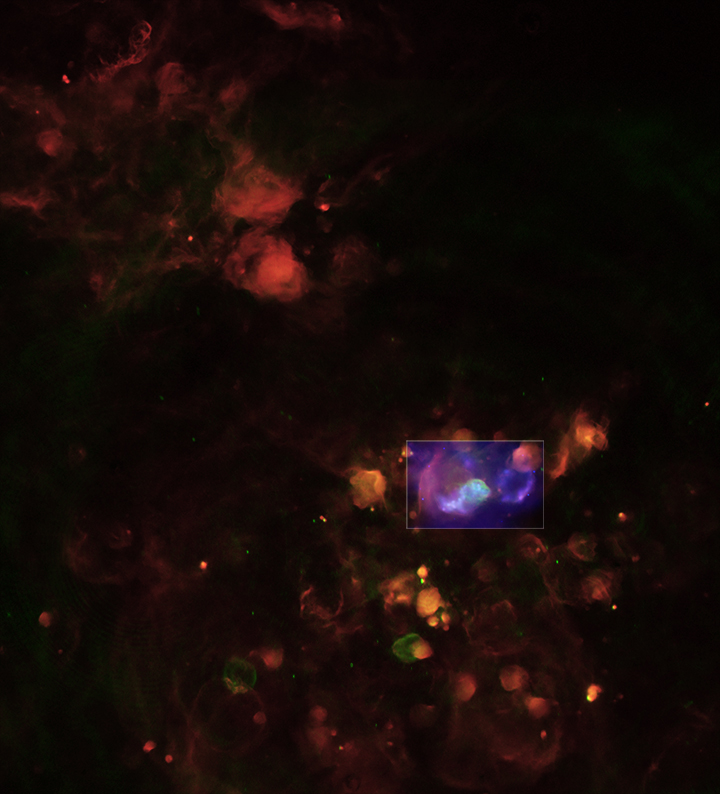

The Small Magellanic Cloud, which can be found just 200,000 light-years from Earth, is among our galaxy’s nearest neighbors, but don’t let the “small” part fool you—the SMC contains millions of stars, in various stages of stellar evolution.
This stunning star forming region is one of them. Called LHa115-N19 (N19, for short), it exhibits many strange characteristics, which can be seen in red and green in this image from Chandra.
The areas marked in red show regions in which newborn stars have ionized their stellar envelopes; green-tinged portions of the image depict radio data; while blue and purple are representative of light at x-ray wavelengths. When compiled, astronomers see compelling evidence of “superbubble” formations. Per NASA:
Astronomers used Chandra to peer into one particular region of clouds of gas and plasma where stars are forming. This area, known as LHa115-N19 or N19 for short, is filled with ionized hydrogen gas and it is where many massive stars are expelling dust and gas through stellar winds. When the X-ray data (blue and purple) are combined with the other wavelengths, researchers find evidence for the formation of a so-called superbubble. Superbubbles are formed when smaller structures from individual stars and supernovas combine into one giant cavity.
The Chandra data show evidence for three supernova explosions in this relatively small region. Furthermore, the Chandra observations suggest that each of these supernova remnants were caused by a similar process: the collapse of a very massive star. There are hints that these stars were members of a so-called OB association, a group of stars that formed from the same interstellar cloud.
[Reference: Chandra Site]
See a larger image here.